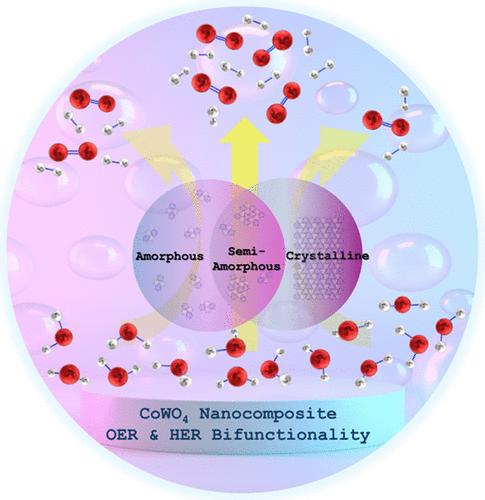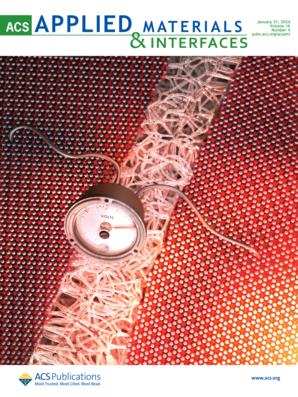Bifunctional Nanoelectrocatalyst: Semi-Amorphous Cobalt Tungstate-Based Nanocomposites Surpassing Amorphous and Crystalline Counterparts
IF 8.3
2区 材料科学
Q1 MATERIALS SCIENCE, MULTIDISCIPLINARY
引用次数: 0
Abstract
Electrocatalytic water splitting to hydrogen and oxygen is considered to be one of the significant routes for future renewable energy conversion. Therefore, the development of unique, efficient, and cost-effective bifunctional electrocatalysts, which can perform both hydrogen evolution reaction (HER) and oxygen evolution reaction (OER), is critical for the accessible utilization of renewable energy. The increasing overall efficiency of the water-splitting reaction is pivotal for sustainable energy conversion and hydrogen production. Herein, we present a facile solution-based synthesis route to control the crystallinity of the cobalt tungstate (CoWO4) nanomaterials to amorphous, semiamorphous, and crystalline phases and further exploit these nanomaterials as bifunctional electrocatalysts for the HER, OER, and overall electrochemical water splitting reaction. Notably, the semiamorphous cobalt tungstate nanomaterials show a remarkable surface area of approximately 150 m2/g, the highest reported for CoWO4-based materials, and demonstrated superior activity for both the OER and HER and outstanding stability over the amorphous and crystalline counterparts. Notably, the SemiAmp||SemiAmp electrolyzer demonstrated a better performance for overall water splitting than the commercial RuO2||Pt/C electrolyzer.

求助全文
约1分钟内获得全文
求助全文
来源期刊

ACS Applied Materials & Interfaces
工程技术-材料科学:综合
CiteScore
16.00
自引率
6.30%
发文量
4978
审稿时长
1.8 months
期刊介绍:
ACS Applied Materials & Interfaces is a leading interdisciplinary journal that brings together chemists, engineers, physicists, and biologists to explore the development and utilization of newly-discovered materials and interfacial processes for specific applications. Our journal has experienced remarkable growth since its establishment in 2009, both in terms of the number of articles published and the impact of the research showcased. We are proud to foster a truly global community, with the majority of published articles originating from outside the United States, reflecting the rapid growth of applied research worldwide.
 求助内容:
求助内容: 应助结果提醒方式:
应助结果提醒方式:


